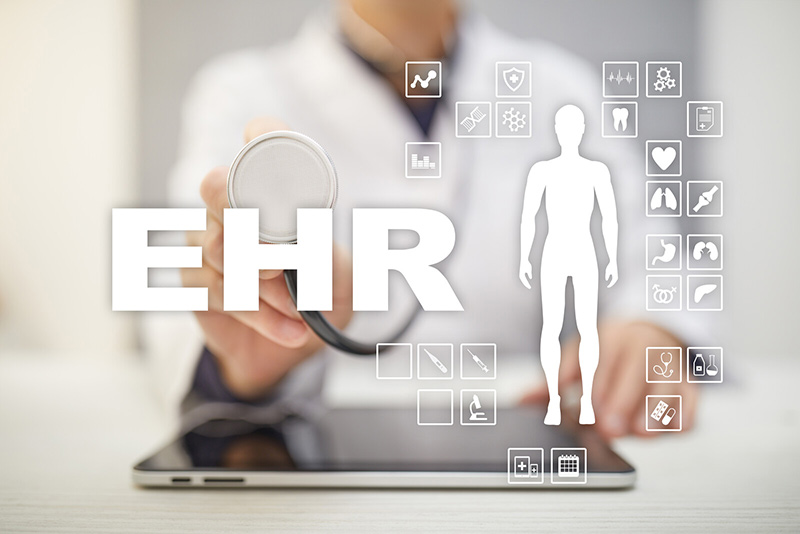
Medical documentation is an important aspect in the healthcare industry, and over the years it has undergone several changes. Earlier, the medical record was a simple handwritten document which has now transformed into digital format. Today, healthcare units and hospitals have adopted EHR systems for efficient management of medical documents. It improves speed and access to the medical data physicians need to make the right healthcare decision for their patients. EHR is an electronic record of an individual’s medical history and this standardized system ensures secure exchange of health information. EHRs are designed to improve healthcare quality, ensure patient safety, and reduce health costs. With the EHR, patient health data can be shared among all the authorized parties involved in the patient’s care: clinicians, labs, pharmacies, emergency facilities, nursing homes, state registries, and patients themselves. However, EHR documentation burden often leads to physician burnout. The conventional dictation- transcription process can be utilized even in this EHR age, wherein professional transcriptionists help in creating structured narrative medical reports of patients. Reliable EHR-integrated medical transcription services ensure quality and accuracy of the medical records. This system helps physicians focus more on providing patient care rather than wasting time in documentation.
EHRs play a crucial role in the healthcare industry. The information included in the EHR include the patient’s medical history along with the diagnoses, treatments, immunization dates, allergies, tests and laboratory reports that allow physicians to decide on the best treatment plan for the patient. There are four types of EHRs.
- Software: This is a traditional model of EMR, where the healthcare organization has to physically install software on to a computer or a server at the practice location. This is usually used to get the infrastructure started and running and when the infrastructure needs updating, new installations are upgraded. It can accumulate data within the silos of the healthcare practice and are visible to them but cannot provide any insights into the program.
- Software as a Service (SaaS): With the SaaS model, the practice does not have to exert any technical effort or perform any maintenance; all work is done by the provider and stored in the cloud. The software can be updated on a single network and supports a nationwide provider database for healthcare needs such as orders, referrals, and globally deployed vocabularies and templates. It also serves as a single communications connection to payers, clearing houses, hospitals and pharmacies. The drawback of this model is that it provides only management and maintenance of the software and no services are provided.
- Cloud-Based Service: In this type of service, the location and hardware are owned by a third party that offers its services by providing software and storage space for your EHR system. Here, the onus of maintenance of the hardware and regular backups is on the vendor. The main advantage of implementing this kind of EHRs is that there is no need for an upfront investment for the hardware requirements and the services can be used on lease with only a monthly fee. However, the disadvantage with these is that they are dependent on internet connectivity.
- Application Service Provider: With an ASP, the software is installed on the vendor’s system and not on the practice’s own servers. As compared to conventional EHR software technology, this model is more advanced, as it can reduce a practice’s initial expenditures. However, on the other side, the operating costs of this model can rise. The demand for ASPs increased to respond to small- or medium-sized businesses that have tight budgets and cannot afford expensive up-front costs for software. ASPs deliver lower start-up costs for smaller medical practices, but they lack the value of a shared data network or any visibility into a practice’s performance, pertinent benchmarks and growth opportunities. The type of cloud system used in ASP is a closed or private cloud one which allows easy web-based access, but it does not offer open sharing.
EHR is essential in the healthcare setup for ongoing clinical decision making, providing quality patient care, quick reimbursement and risk management. But to ensure accuracy, it also requires the intervention of medical transcription services that can contribute to quick and error-free EHR documentation. Once the dictation is run through the speech recognition software, it has to be edited either by a medical transcriptionist or by the physician for better workflow of the medical practice. After the physician signs the transcript, it can be uploaded into an EHR using HL7 interface for the exchange of health information, medical coding and reimbursement, medical decision support system etc. Accurate medical data helps physicians and healthcare providers to provide better patient care.


